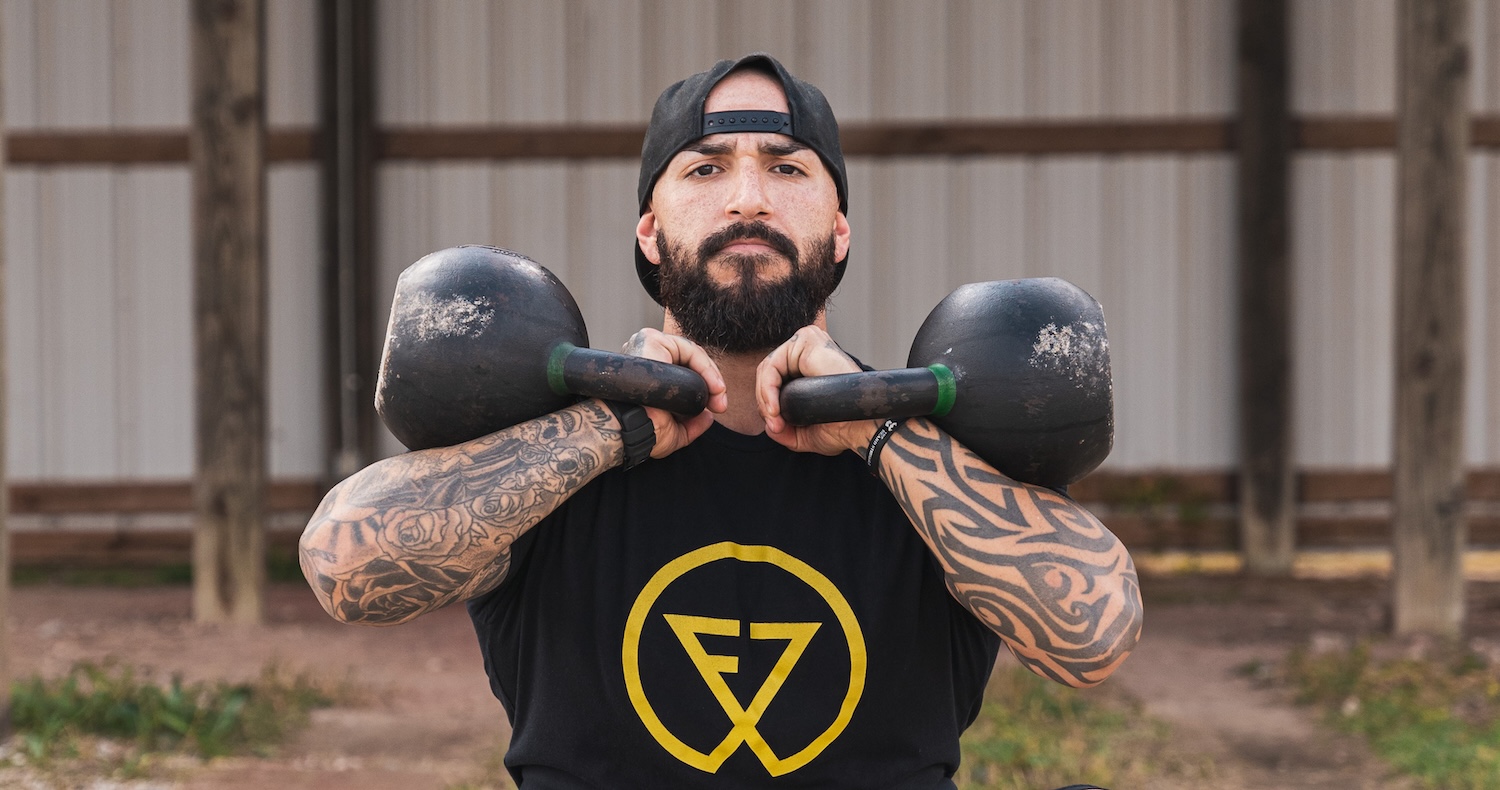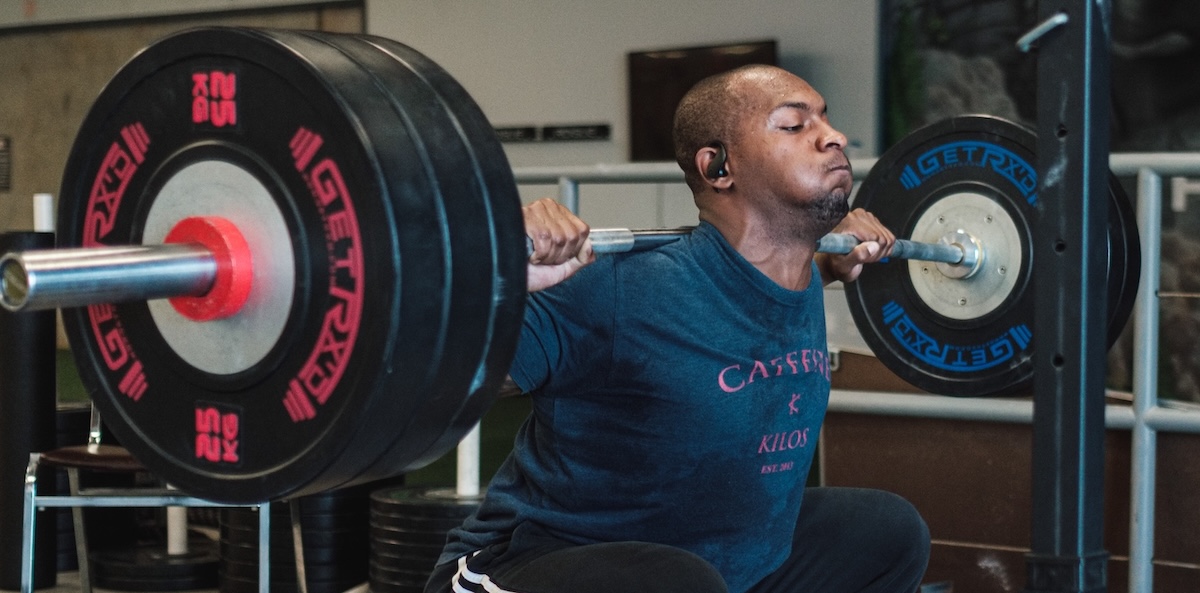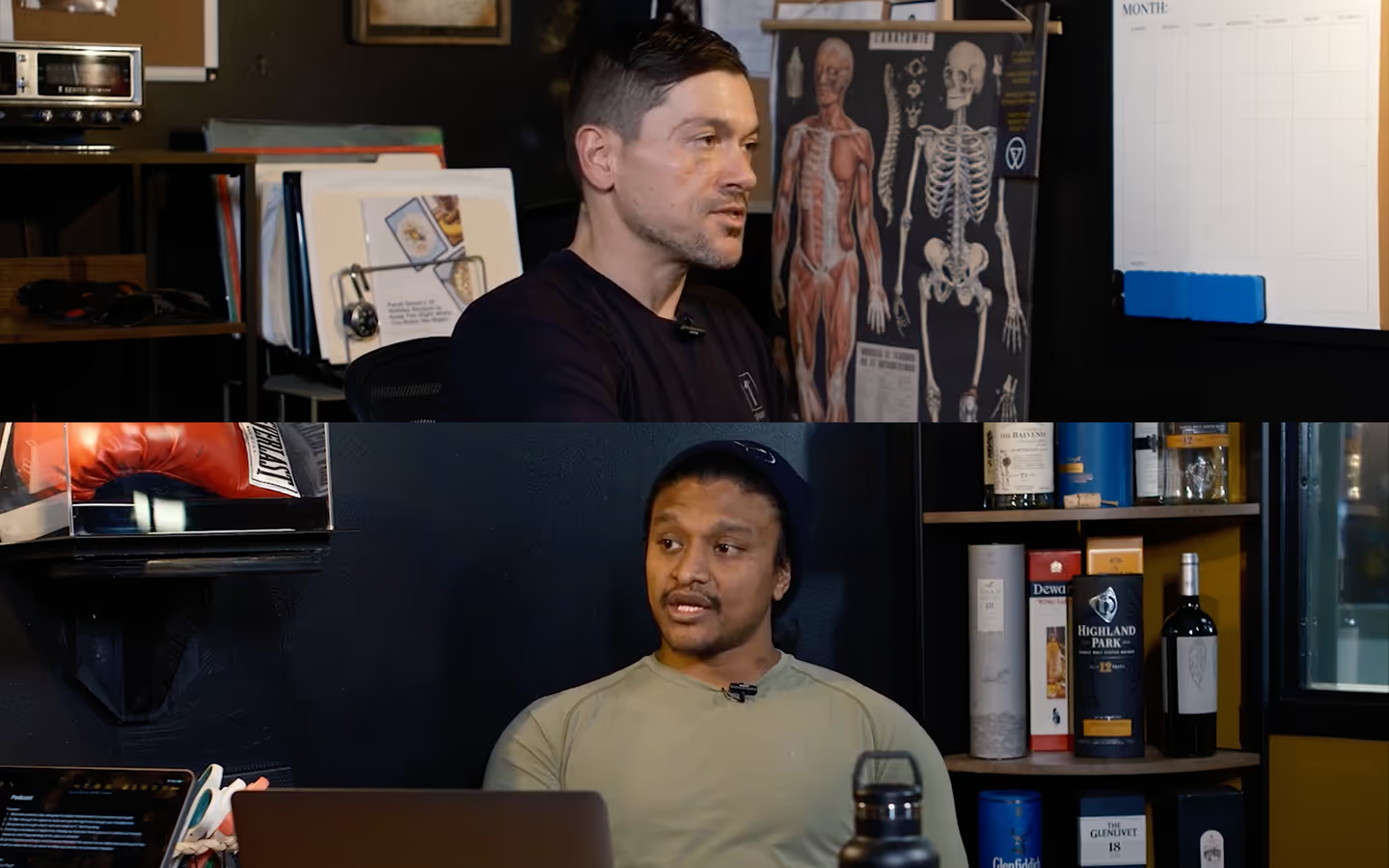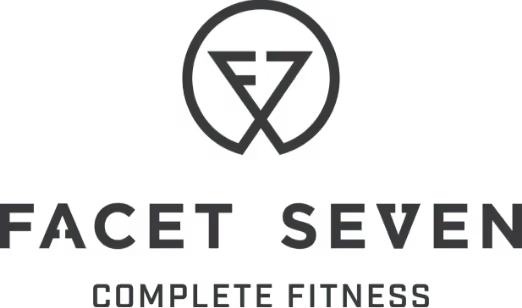Episode 1 - Foot Health - Are you wearing the right shoes to lifts? Why is it important to take care of your feet?
If you feel sluggish, inflamed, numb, disconnected, who’s really in control?
THINK ABOUT IT...
You’ve been conditioned to think about your body as something mechanical, as an object to drag through the day- something to push, fix, punish or decorate…
But never as sacred…
Never as intelligent… as a vessel of Divine intention.

The ancients knew this. The body was never a burden, it was a temple. Not just in theory, but in function.
Every breath you take, every cell in your gut, every spark in your nervous system, it’s all part of a living code designed for perception beyond the 5 senses. But the modernism of the recent centuries is teaching you constantly to ignore it.
Start with the gut.
The gut produces more neurotransmitters than the brain, it’s your second brain, regulating your mood, your energy, and your spiritual receptivity. Yet it’s constantly under attack.
Pesticides, processed foods, antibiotics, synthetic preservatives, all designed not just to destroy gut flora, but to destroy our capacity to feel clearly. When your gut is compromised, your mind is clouded. When your digestion is inflamed your thoughts are unstable.
Those in the “remedy” business don’t want you to be sharp, focused, and intuitive… they want you bloated, distracted, emotionally volatile, and they’ve engineered the food system to be sure.

But it’s not just the food. It’s your water, your air, your light.
Tap water filled with endocrine disrupters. Air saturated with industrial toxins. Artificial light that scrambles your circadian rhythm and drains your life force. And through it all you're told this is normal, you're told to adapt. To medicate. To caffeinate. To carry on. And when your body starts breaking down they offer pills instead of root solutions.
They give you diagnosis after diagnosis but never ask the real question -
what are you feeding the instrument of your divinity?
That system doesn’t profit from your clarity…it profits from your chaos.

This is why healing your body isn’t just a wellness trend.
It’s an act of Rebellion.
It’s the foundation of awakening.
Your consciousness can’t fully rise in a body that’s drowning in inflammation, toxicity, and fatigue.
You can’t connect to the Divine when your nervous system is in survival mode. You can’t remember who you are when your cells are constantly battling the poisons of modern life.
Liberation isn’t only mental, it’s cellular. And every choice you make, every meal you eat, every breath you take is either feeding your awakening or feeding your suppression.
And here’s the real breakthrough.
Your body wants to wake up. It’s always communicating. Always recalibrating. Always moving towards healing when you give it even half a chance. And when you start treating it like the intelligent energetic vessel it is, everything shifts. Your thoughts clear, your emotions balance. Your intuition sharpens. That’s not a coincidence. That’s coherence.
That’s not a coincidence. That’s coherence.
The state where your body, mind, and spirit align into one unified field. That’s when you stop living from your head, and start living from your whole being. That’s where awareness stops being a concept, and starts becoming your baseline.
Most coaches bypass this.

They tell you to rep your problems away while still eating food that numbs your senses and scrolling until your dopamine is fried. But you can’t hack your way to awakening. You have to live it, feel it in your skin. In your gut, your breath. This is true embodiment. Not the aesthetic kind, but the kind that rewires your nervous system and clears the fog from your perception. Because the Divine doesn’t live in the sky or in scriptures. It lives in your blood, your bones, your breath. You don’t have to look outside to find it. You just have to clean the vessel it’s been trying to move through all along.
TAKE BACK CONTROL OF WHO YOU ARE.
Rebel against being blind… Rebel against the leeches of your energy.
Find who you were meant to be.
Find who you are.
We have courses designed to awaken you. Learn the basics of how your body moves.
DISCOVER HOWTake the purple pill and go down the rabbit hole with us. We are here for you, all the way.
TAKE THE LEAP
So you're fit now. Hi, I'm Layn Chess. Hi, I'm John with, and this is Movement Freedom with L & J. Today we're going to talk about food, health and what that means. A lot of us have knee hip, low back pain and what we're gonna do is talk about the first point of contact we have with the ground, our feet, and why that can have an impact upstream into our ankles, knees and hips and hopefully we'll be able to give you some takeaways that you can use at home that will help you get out of pain and be able to move more naturally.
Yes, that's great and all. Layn But what is a foot now? Fun looking up the definition of a foot. I got to tell you, there was a lot of different information out there, but I kept finding a very similar thread, which was multiple places state that it's considered the terminal portion of a limb which bears weight and allows locomotion.
It's got 26 bones, which is interesting that it's over 10% of the bones of the human body are all in your point of contact with the earth. We looked at the word foot. It actually comes from an old proto Germanic word for f0t meaning a foot. And part of that is when King Henry was measuring his foot. It came out to 12 inches long.
And now we use that measurement today for a foot. Well, they like their beer is three grains of barley made an inch, 12 inches made king Henry's foot. Well, well, let me ask you, what are the focus points of a human foot? A lot of us have knee, ankle, hip and back pain and where this comes from is having issues starting with the foot.
It's our first point of contact with the earth. You know, I know that you've seen a lot of clients come in. They start squatting, ankles are collapsing. You know, I've dealt with runners, they come to me and they've got, you know, fasciitis or Achilles tendon. And these issues that are occurring from not using the tool of the human body that we have properly, when they come into squat, you're noticing dysfunction of chain beginning at the feet.
Yeah. So first I think we need to first talk about what what the kinetic chain is. When you think of a kinetic chain, it's things that interact together, right? And when you say move something up or downstream, it's going to affect everything else, right? And so when we start at the feet or from the ground level and work our way up where we have to have good arches, well, what are good arches?
What I would consider a good arch is a stable arch or an arch that really doesn't collapse or invert or even start depending on if you are moving around. You have three focal contacts of your foot. You have your heel, which is the main point. You have your right under the big toe, which is part of the triangle or tripod your foot is.
And then you also have right of the pinkie toe, Right. And so when you feel all four points of contact and you have a good stable arch, you have good three points. Think you're like one of three points of contact. You have a stable, stable foot and a stable arch, right? Well, having an unstable foot or unstable arch, what happens is say you are squatting, right?
And now you go down to your squat and your foot collapses and well, now when your foot collapses and the ankle is going to follow, that right. And as the ankle follows, the knee follows. And as your knee shifts in or you get values collapse, quote unquote, right, your hip starts to shift and you start to see these imbalances or asymmetrical patterns up and down the chain.
But it all started from your foot, right? Yeah, absolutely. And, you know, whenever I've seen clients a lot of times, you know, we're dealing with their feet being so constricted that they've lost how to actually use them. I've I'll take my clients shoes off a lot of times. And if it's somebody I hadn't worked with before, say we're coaching a class and they come in off the street and they kick off the kicks and I'll take a look at their foot.
And even if it's in a sock, you'll notice it sometimes like that big toes kind of bent in or there's all this compression between the toes. So right away we look at that and say, All right, this person has lost the ability to use their foot properly. We need to establish a protocol to mobilize these feet, to help these customers splay the toes.
Once they can do that, they can grab and, you know, once they do that, they can grab the earth and use the foot the way it's designed. But until that point, we're stuck. The main thing we want to see is that the knee is able to externally rotate, right? Which if our arches are collapsing, that's going to be pulling the knee in.
That's the opposite of out as let's talk more about that stable arch. So a lot of times people, we see them let their foot act passively on the ground. They allow their feet just kind of be pods that they stand on. Whereas we need to see active feet. They're not able to reach their true potential because they've lost the ability to articulate movement.
So I think we're still hovering around, you know, what's happening is we need to see that we can mobilize the tissues of the feet. Well, so we're talking about personal training clients. And, you know, you know, from my experience and I'm a personal trainer. Well, I know you've been dealing with a lot of running athletes. What do you normally see in your running athletes?
And I'm glad you asked. A lot of times I've dealt with mechanical issues and what that means is when people are running, it's a lot of times because they've had a thick sole on their shoe, they think, Oh, I'm supposed to heel straight. When you walk, you stride with the heel to the toe. When running, you should midfoot strike.
If you're doing a more like casual run or endurance run. As you start to speed up, you start to point the toe more and as you get into a full on sprint, you're digging those toes in your forefoot, running the issue, though, is a lot of people running will heel strike and they end up with shin splints. That's one of the biggest problems I've seen.
And they think that there's something wrong and they think they've got problems. And reality is the muscle in the front of their shin is working very hard to keep their toe from smashing the ground every time they hit the heel. So they can eliminate those shin spins immediately by, you know, stretching that toe, stretching the shin, stretch in the toe, do a ballerina toes, which we'll talk about stretching the shin, but furthermore, making sure they change the stride pattern mechanically.
They need to be making sure they're landing the foot or going into the four foot striking. The other issue I have is when people get a little bit too excited and they go into and you'll see them, they look like a kangaroo's running down the street and they're just four foot striking and popping off the ground. And they don't even let that foot relax.
I don't know how I would I would view a kangaroo running down the street. I might turn around and run the rabbit. But no, I mean, you see, they're kind of like they're like on pogo sticks playing point. And when you see them running like that, they can last so long. But eventually those are the ones that end up with plantar fasciitis.
They have Achilles tendon issues and it's because they're overwork in that forefront striking and they're not allowing the mechanics of the arch to absorb. Part of the arch is to absorb the impact or the momentum of our run, our locomotion and transfer into the next stride. If you're locking that toe once again, if we're squeezing our toes together and not allowing the foot display, we're going to constrict our ability to transfer that energy forward.
Number two, the other problem is if we're dorsal flexing too much excuse me, player flexing too much, hence kangaroo running and four foot too much into the ground. We're going to eliminate the arches ability to absorb some of that momentum and instead all of that momentum is going to go straight into those muscle tissues. And when those tissues get tired, they break down quicker.
You're going to get sore faster and or over time. That's when you start to have plantar fasciitis and Achilles problems. Because I look at those death by a thousand cuts and in this whole people a lot of times of love. KELLY Stretch says pain is a lagging indicator that something is wrong. So by the time that people are starting to feel that Achilles, the problem has already begun months earlier, usually.
So going back into mechanics when it comes to running, I cannot emphasize enough to I really wish people learned how to use their bodies before they started to use them. And unfortunately, when we put on these shoes and we do things as little kids that we've been programed to remove from our parents, etc., well, we get walking around in these things by the time we're ten years old, we've completely lost function of our feet.
And further what we understand how our foot works is a complete misperception. And we need to go back to thinking barefoot contact with the earth. You know, thinking about thousands of years ago, all we had was flat leather skins to wrap our feet with, and that's how our bodies have evolved. So I'm not saying when you go out and leather skins on the street, but let's try to get back to as much of a functional pattern that we can.
That's powerful. I like that. So with, you know, like with our audience, you know what, what are some takeaways that they can take from this podcast and be like, Hey, what are the next steps for improving my foot health? Yeah, so starting one of the circling themes is been going on through this conversation has been mobilization. All right.
We have to mobilize these feet. The more that we can articulate our feet like we can our hands, the better off we're going to be. The more functional we meet, the more stable we're going to be. And truly more mobile we are. If we can mobilize the tools that upstream is going to get through the ankles, into the calf, into the knees and the hamstring.
So all starts mobilizing with the feet. Have you ever done the lacrosse ball on the feet? Oh, I love it. I have. Do you do the grip and it get on the balls. I have a specific, you know, like I love the lacrosse ball, but the lacrosse ball for me feels like it's almost too big. I can't really dig into some of the.
Oh, you're trying it, man. I think something like that Tiny for me, really. I, I get I have this little small ribs ball that is is perfect like a golf ball size. It's it's small. It's not going to go for Really. Oh, you can really dig in there, man. It is crazy. It is phenomenal. I'm going to try it out.
So in terms of mobilizing soft tissue work, I mean, it's number one most of the time, though, like I said earlier, right. Like you, we try to do things that are almost too big sometimes. Right. And the muscles in the foot, they're all there's so many of them and they're all so small. Right. When you start, you really need something really, really small to dig into it, you know?
But after that, you're talking about getting better shoes, especially for and this is one thing I talk to my clients about a lot, right? It's just really understanding what type of shoe is for What right do I get clients that come in? And ideally I would have everyone train barefoot, right? But sometimes people are a little weird about it and I totally get it right.
You're in a gym dirty, right? You know, you don't know what people are having or whatever, Right? But with that said, a lot of people come into the gym. They don't want to be barefoot, but they have running shoes on it Just have this super narrow toolbox. You can't do anything with it. Right. It offers, you know, stability.
Right. And so what actually stabilizes? Yeah, absolutely right. So I told my clients, get a training shoes and something with a nice wide toolbox, you know, something like it feel comfortable in, but also feel stable in. Right. And that's the most important thing when we're talking about training is just do you are you stable first? So we're talking toe spacing, right?
But that leads to getting barefoot more. All right. So I'm a big fan of this, walking in and grass getting in the dirt with your feet, walking in the mud. Get the dogs out, man. Eric Church says nothing. They'll dust the rust right off your soul, walking through some. I'll tell you there's something good about it. You know, I've actually read stuff and it's like there's this positive negative energy transfer If you step on the dirt and all this and that.
I don't know. I just know it's good for you. Feel good about and for me, I got to the point where I mean you have to condition. I mean, you can't just go out there barefoot and start running on trails. But, you know, starting off just a couple of feet of walking through the trails, you'll feel I mean, you might feel some roots, you know, kind of.
But over time, you. CALLISON You build up to it before, you know, you can do some short runs. And, you know, I got to where I could do short runs through the memorial trails. I just have a blast back there. And, you know, but here's the thing I'll do barefoot, running on the memorial trails any day, but I'm not going to go barefoot down Allen Parkway, you know, pavement, concrete.
Right. So now talk about purpose and, you know, in function of the tools that we have. Exactly. You said a minute ago, this makes sense. Okay. Now maybe I'll put on a pair of running shoes. You know, I'm a big fan of cloud. You on's whatever. I like wearing ons for when I go running, but if I'm training, I got a pair of new balance flats on, you know, And then if I'm out on the trails, I'm barefoot, you know, like I said, everything has its place, but you have to know when and where to put these items.
And I wouldn't say Barefoot Shoe and go run a marathon and I wouldn't say, you know, put on a running shoe and do squats. You know, it's it's kind of as simple as that. And we I just really hope we can wake people up to that little bit, be barefoot. Y'all could be barefoot. Another thing I want to touch on is the ballerina toes.
I love doing ballerina toes. It feels great. It's a stretch. It feels great doing ballerina toes. But at the same time, the craziest thing I ever saw is a guy actually curl this toes all the way in and walked on his toe knuckles like curl them in completely. And with ballerina toes it's completely extended ankle. It was nuts.
I wish I could find that video. Maybe we can find it and post it after the show. Maybe. Maybe that'll be the thumbnail. The guy like walking around on his knuckles since we're in the kangaroo. Yeah, I don't. Another direction to that, but yeah. Curling those toes in and punching your knuckle in and extended your ankle, you'll feel that stretch all the way through the front of the ankle up the front of the shin and that'll help get rid of shin splints very quickly.
But furthermore, it also help just overall ankle foot flexibility. It's super important. So I really hope everybody enjoyed our rant about the feet. We have many more coming. We're going to be talking about the human body from the feet all the way up to the head. One segment, one joint, one limb at a time. I'm hoping our listeners are able to gain something that they can take away and use in their lives to be, you know, more functional, more healthy, more capable, doing the things that they love.
All right. Stay tuned. Y'all got ankles, calves. And then we got knees and then hips right after that. Yeah.



